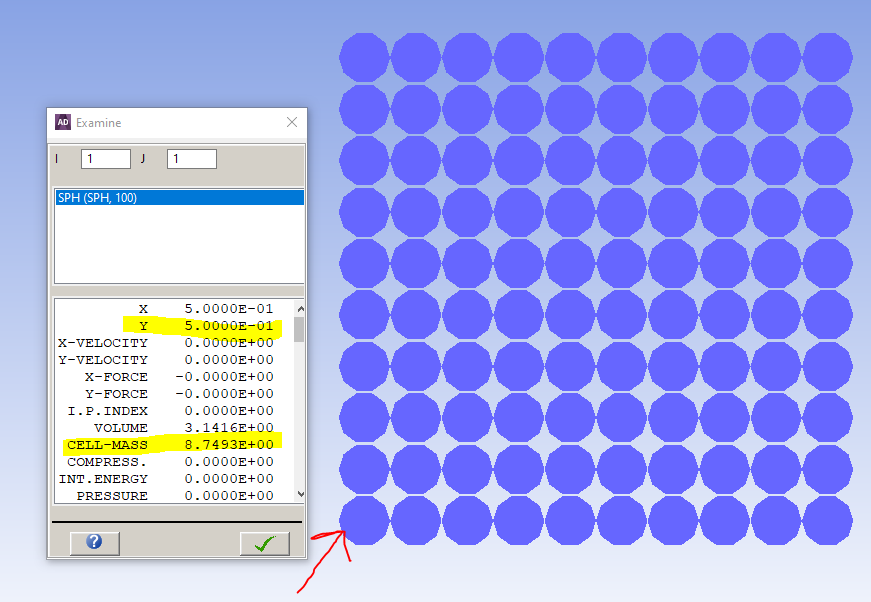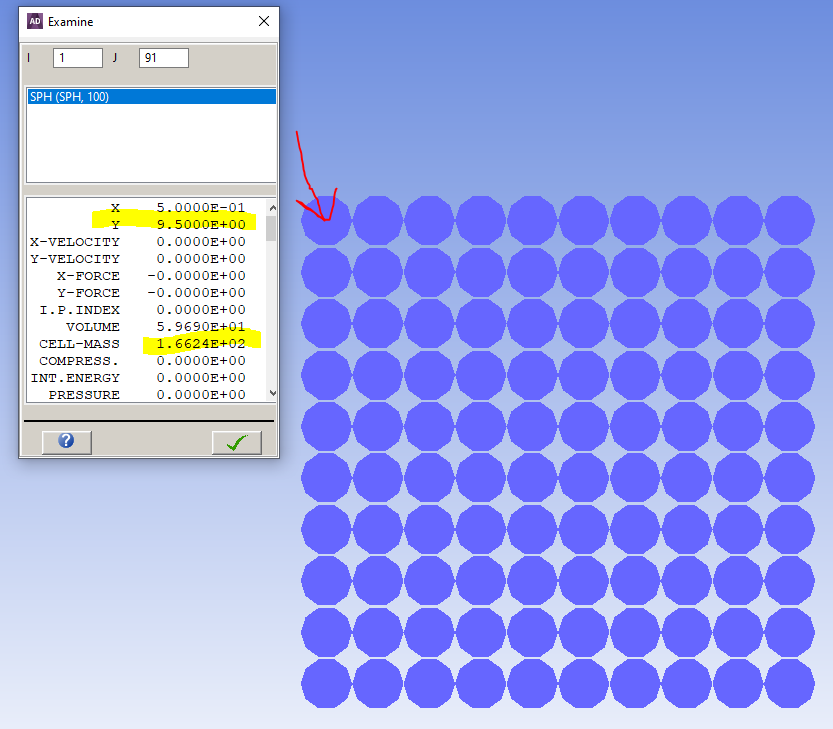TAGGED: 2D, 2d-axisymmetrical, autodyn, hvi, sph
-
-
October 14, 2021 at 3:15 pm
Conorryan98
SubscriberHello,
I'm using SPH in order to simulate a hypervelocity impact. I'm using 2D axis symmetry. I have written a user sub routine so that any SPH particles that pass through a numerical fence at the boundary of my target get their data read into a .dat file. This allows me to extract individual x-momentum data and do my calculations. I'm wondering if Autodyn takes into account the fact that I am using 2D axis symmetry or do I need to invert all of my results I get to cover the results in the negative side of the Y-axis?
@cxquan any idea?
Thanks
October 19, 2021 at 4:41 pmChris Quan
Ansys EmployeeInternally, the program assumes the unit length in circumferential direction in 2D axial symmetry.
So I believe that you need to multiply the x-momentum you obtained by 2*pi*R, where R is the radius of the axial symmetry. R should be equal to the Y value of the SPH particle.
Suggest you to run a small test problem first to verify the results from the user subroutine before applying it to your production runs.
October 20, 2021 at 12:17 pmConorryan98
SubscriberMany thanks.
I also used CMASS in order to extract SPH particle mass.
I was able to extract the projectile data before it had hit the target, and I got 148 sets of data ÔÇô the same amount of SPH particles in the projectile. The odd thing is that mass for a 1mm sphere packed with AL 2024-T4 (density = 2.785 g/cm3) should be 1.458 mg. I got a mass result of 0.43956 mg for a half circle, see excel sheet attached. When I compare the individual sph mass of the projectile that I obtain, it differs from "Cell Mass" value in the in-built Autodyn examine function. For example, for particle 148, index 1748, I get a mass of 0.00033 mg, whereas the examine function shows 0.001051 mg. All other variable results apart from mass are the same.
When I multiply the mass by 2*pi*R, where R is value of Y particle, I only get 0.8133 mg. I would have expected to get ~1.458 mg.
I am not sure what the difference between the 3 mass types outlined in the Autodyn user subroutine guide are. In 2D there is Node-mass, cell-mass and mass. It says that the only one available for SPH is the cell-mass, and thatÔÇÖs the one IÔÇÖve been using.
Do you have any insight into this?
Many thanks.
October 21, 2021 at 6:12 pmChris Quan
Ansys EmployeeYes, CELL-MASS is the right variable to retrieve the mass of a SPH particle. Also, please be aware that in 2D axial symmetry, SPH particle is a circular ring in 3D space.
Here are my calculations:
For the SPH particle at the bottom left corner: X = 0.5 mm, Y = 0.5 mm, Particle Size = 1 mm, AL2024-T4
Cell Mass = Density * R^2 * 2 * pi * Y = 2.785 mg/mm^3 * 1 mm^2 * 2 * pi* 0.5 mm = 8.7493 mg. See attached picture below.

For the SPH particle at the top left corner: X = 0.5 mm, Y = 9.5 mm, Particle Size = 1 mm, AL2024-T4
Cell Mass = Density * R^2 * 2 * pi * Y = 2.785 mg/mm^3 * 1 mm^2 * 2 * pi * 9.5 mm =1.6624E2 mg. See attached picture below.

October 22, 2021 at 11:18 amConorryan98
SubscriberThank you,
So in your calculation, the term:
2*pi*Y refers to transforming the SPH particle from 2D particle to a circular ring in 3D space.
Then you also multiply by R^2. Your particle size is 1mm, i thought this was diameter so should this R (radius?) term not be 0.5? What is this R^2 term doing? thanks
October 22, 2021 at 3:37 pmChris Quan
Ansys EmployeeR^2 is the area of the square where the SPH particle occupies.
October 26, 2021 at 12:01 pmConorryan98
SubscriberGreat thank you!
Viewing 6 reply threads- The topic ‘If you use 2D axis symmetry, does that mean Autodyn also calculates data beneath negative y-axis?’ is closed to new replies.
Innovation SpaceTrending discussionsTop Contributors-
4778
-
1565
-
1386
-
1242
-
1021
Top Rated Tags© 2026 Copyright ANSYS, Inc. All rights reserved.
Ansys does not support the usage of unauthorized Ansys software. Please visit www.ansys.com to obtain an official distribution.
-











